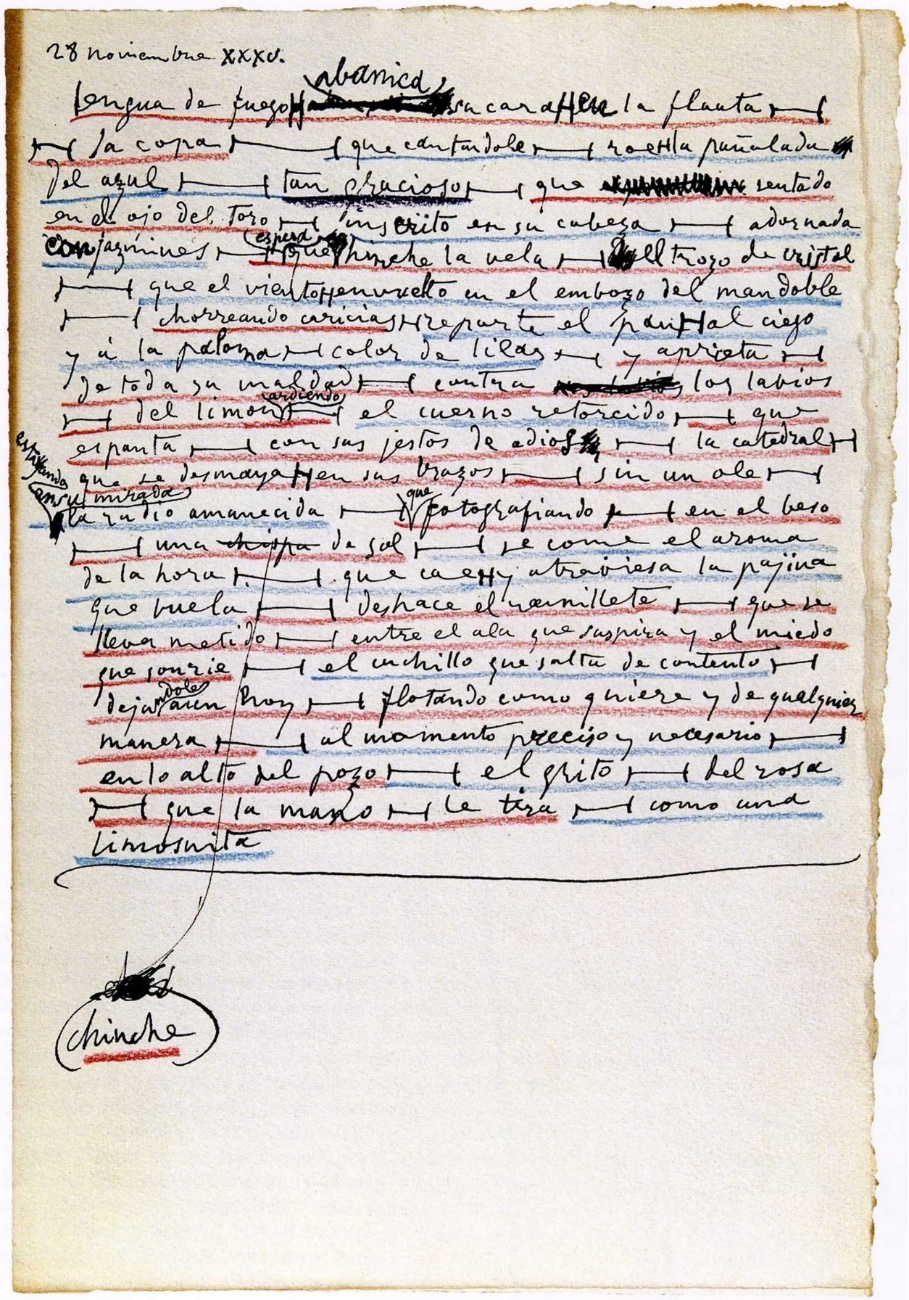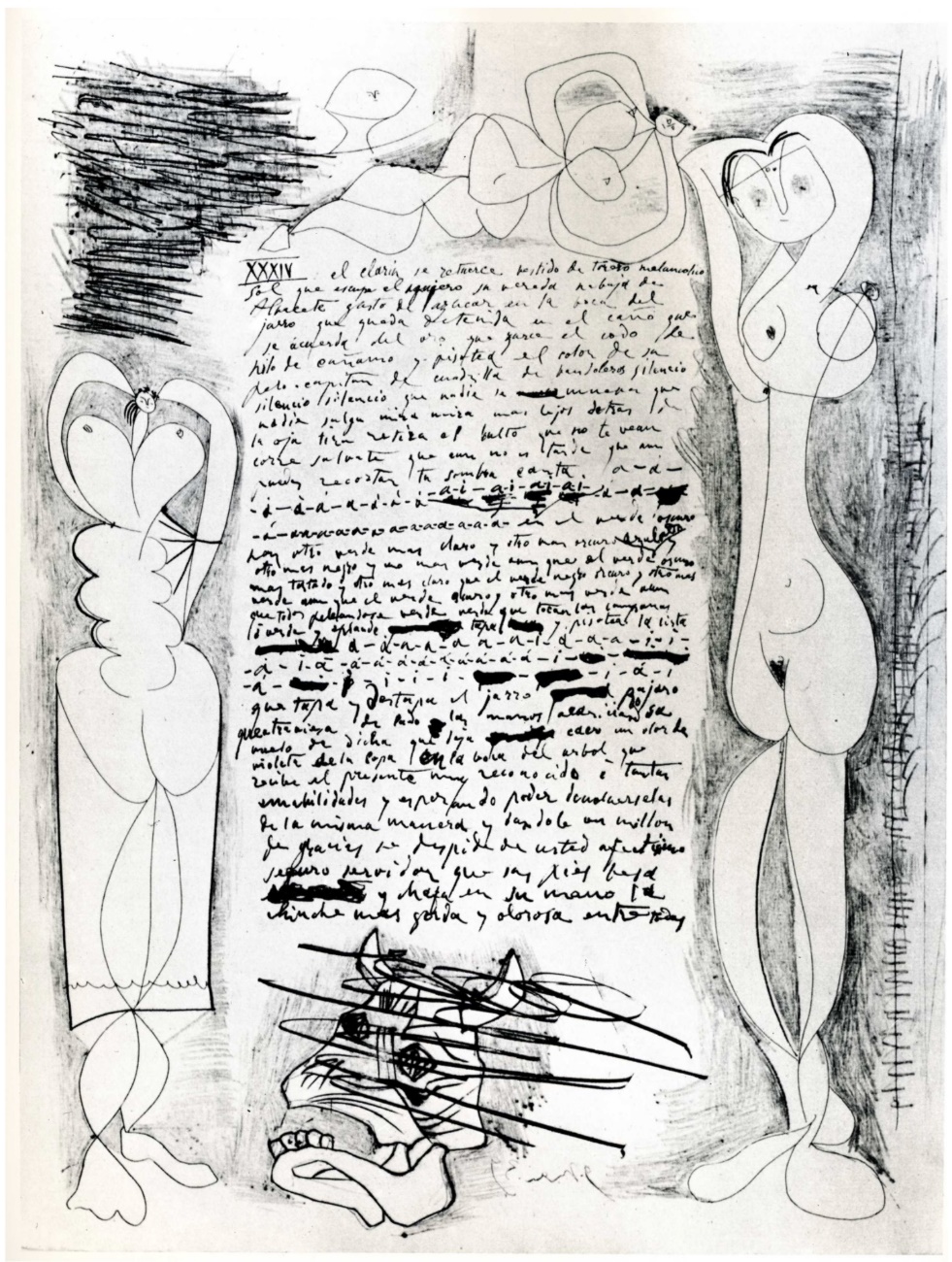Visual Text: Encoding challenges in Picasso’s poetry (paper)
Luis Meneses* Dr. Luis Meneses is a Postdoctoral Fellow at the University of Victoria, Canada . He is a Fulbright scholar, and currently serves on the board of the TEI Consortium and on the IEEE Technical Committee on Digital Libraries. His research interests include digital humanities, digital libraries, information retrieval and human-computer interaction. and Enrique Mallen* Dr. Enrique Mallen, Professor at Sam Houston State University, U.S.A. (SHSU), is Director and General Editor of the Online Picasso Project (OPP), a digital catalogue raisonné on Pablo Picasso used by Picasso scholars throughout the world. He has written extensively on Picasso’s Cubist and Surrealist periods, as well as on Picasso’s literary writings.
1Pablo Picasso’s poetry presents an interesting challenge to the TEI community. While we see a close correlation between his poems and his artworks, one cannot deny that they are essentially verbal, and not conditioned by plastic principles. Nevertheless, his writing has three combined characteristics that makes it different: it is linked to multiple versions; it contains many additions and deletions; and it is essentially “visual text-” -as can be seen in figures Figure 1 and Figure 2:
- His poems can be read in a continuity of states like a unique, metamorphosing text, or their altered versions can be read separately as different entities. In his poetry we are faced with multiple interconnected texts, which offer several readings through their successive “re-writings” and “re-readings.”
- His poems display numerous bracketed words which are purposely left differentiated in Picassos manuscripts as footnoted “afterthoughts” to the text. The reader is left to choose whether to follow the suggested insertions or to continue with the original text, ignoring the later additions. Androula Michaël defines Picasso’s poetry as a space of “labyrinthine writing” where words proliferate, attract one another, and break the syntagmatic line of language, freeing phrases from grammatical constraints (Michaël, 2011).
- Picasso’s poems include many graphic components, such as hyphens, coloring and underlinings, a variety of scripts, etc. This combination of text and graphic material is reminiscent of Picasso’s collages in which different media were used for a single composition.
2For some time now, our research has analyzed Picasso’s artistic legacy (Meneses et al., 2011) and his poetry (Meneses et al., 2008). From an encoding perspective, Picasso’s poetry presents an interesting test case that needs to be addressed in the pedagogy and practice of the encoding initiative. In our analysis of Picasso’s poetry, we will highlight a unique set of challenges and possible solutions for encoding these documents in TEI.


Bibliography
- Meneses, Luis, C. Monroy, R. Furuta, and Enrique Mallen. 2011. “Computational Approaches to a Catalogue Raisonné of Pablo Picasso’s Works.” Interdisciplinary Journal for Germanic Linguistics and Semiotic Analysis.
- Meneses, Luis, C. Monroy, Enrique Mallen, and R. Furuta. 2008. “Picasso’s Poetry: The Case of a Bilingual Concordance.” Digital Humanities 2008. 157–159.
- Michaël, Androula. 2011. “Picasso poète. Une expérimentation permanente” Études Tome 415(9): 219–230.